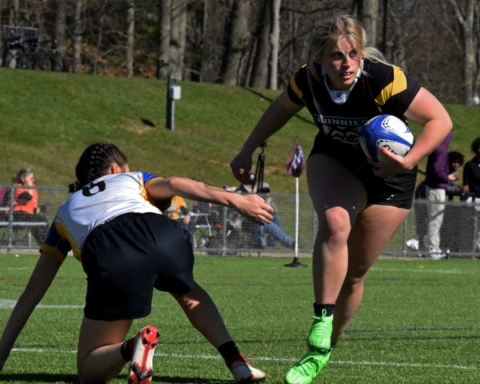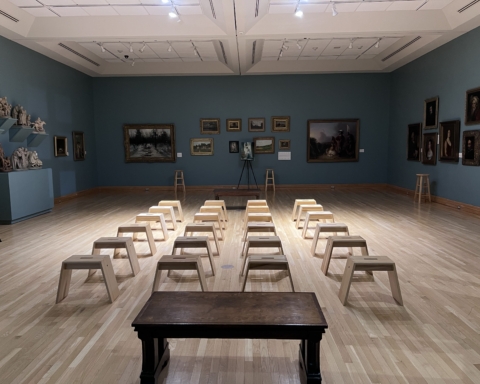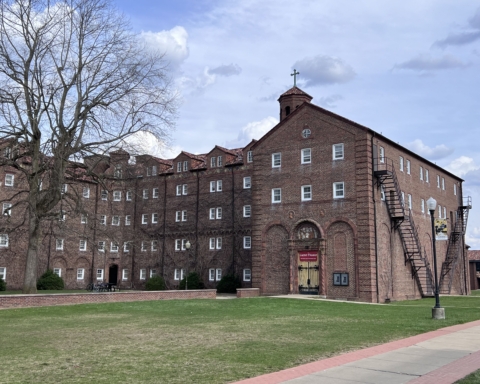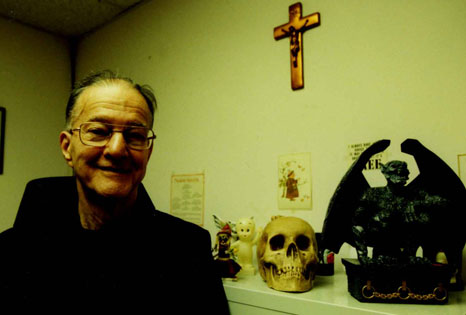The Administration building
David Scibilia/The Bona Venture
BY: DAVID SCIBILIA, FEATURES EDITOR
On the first day of the fall 2023 semester, Jackson Roy walked through the doors of De La Roche Hall at St. Bonaventure University for his introductory microeconomics class. As an accounting major, Roy wasn’t too worried — he was even a bit excited — as he strolled through the corridors to the Walsh Amphitheater. But this excitement turned into surprise when he saw 69 other people already seated. This was by far the largest class Roy had ever had.
Bonaventure is currently experiencing a growth spurt in incoming freshman classes, according to the 2023-2024 factbook, a collection of university statistics.
“Although I knew it was going to be a larger class, I was honestly a little bit surprised” [the university class registration software displays maximum seat counts], said Roy. “I definitely prefer the smaller class sizes. That is one of the things that Bonaventure markets and one of the reasons why I came here and I don’t think I got that in this class.”
Since 2020, freshman classes have averaged 529 students, but is moving toward expanding to 600 incoming freshmen per year and 1000 total graduate students, said David Hilmey, Bonaventure’s provost and vice president for Academic Affairs.
Bonaventure, as of 2022, has 1,868 undergraduate students and 756 full-time graduate students. In 2022 and 2023, the freshman classes were 628 and 574, respectively.
To meet this enrollment goal, the university is adding three more graduate programs — master’s of social work, master’s of speech and language pathology and an education leadership doctoral program — and continuing to add more undergraduate programs, said Jeff Gingerich, university president.
“I definitely prefer the smaller class sizes [20-25 students] though,” said Roy. “If the other class sizes weren’t all the same, I probably would have waited for a smaller [class].”
Some professors, mostly those who use a discussion-based methodology, said class sizes play a major role in the effectiveness of their teaching.
“My classes are heavily discussion-based,” said Andrew Belfield, an assistant professor of theology and Franciscan studies. “My classes are capped at 25 students, which I think is good, but classes with 18 to 20 have had the most lively discussions.”
Foreign language classes are similar, said Alva Cellini, a professor of world languages and cultural studies.
“Thirty students in a language class would probably be too many,” said Cellini. “Because you need a lot of participation, 15 to 20 students would be best.”
While some classes — mainly general education courses — may have to expand beyond 35 students, the majority of classes will remain around the sizes they currently are, said Hilmey.
“I like being able to know my professors one on one,” said Anthony DaSilva, a junior broadcast journalism major. “I haven’t had a huge problem in my time here, but it will always be easier to connect when there are fewer people in the class.”
Some professors said a connection with their students was important to them.
“As a student at Bonaventure, I loved the one-to-one, individualized attention I got,” said Michael McLanahan, an alumnus and current lecturer in the business school. “That’s what I feel like I got as a student, and that’s what I try to give my students, regardless of class size.”
Community is essential to Bonaventure’s mission, said Gingerich.
“In order to have that kind of community that we want, we need to have enough people here to have the resources to support each other, but not too many that we can’t get to know each other,” said Gingerich. “But the second part of this is our infrastructure and facilities. We can’t have more students than our infrastructure can handle.”
Bonaventure is able to house 1,674 students across all residential halls. There are 1,503 students currently living on campus.
“It’s easier for us to grow online because it doesn’t affect the infrastructure question as much,” said Gingerich.
Part of the recruitment plan for the graduate program comes from retaining undergraduates.
“We’re trying to promote our graduate program [to] undergrads through early assurance programs,” said Bernie Valento, the vice president for enrollment. “And a good percentage of our students continue on here for graduate school, especially in business, communications and education.”
Adding new programs ensures the university meets its enrollment goals, said Hilmey.
“There are new programs that we can offer that [will] hopefully keep our undergraduate population where it is and maybe grow it a little bit,” said Hilmey. “But really where we saw the greatest potential for growth was in online graduate programs.”
As the university expands, Gingerich said there’s a possibility to expand upward of 3,000 students — but it is not going to happen in the next couple of years.
“We want to dream about growing and expanding the opportunities for students to come to St. Bonaventure,” said Gingerich. “But we’re just not ready to go [beyond] 3,000 students.”
scibild22@bonaventure.edu









